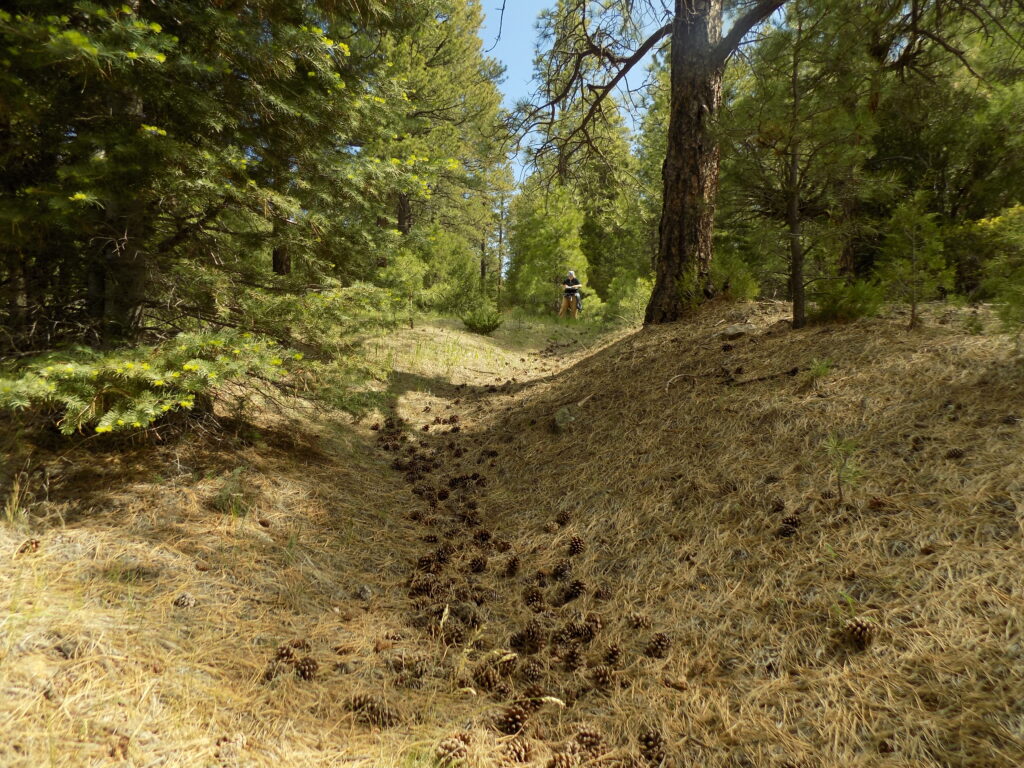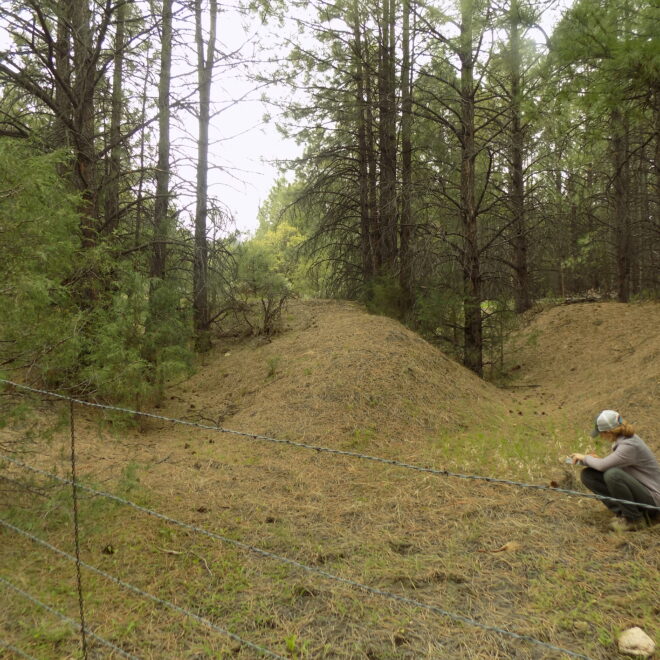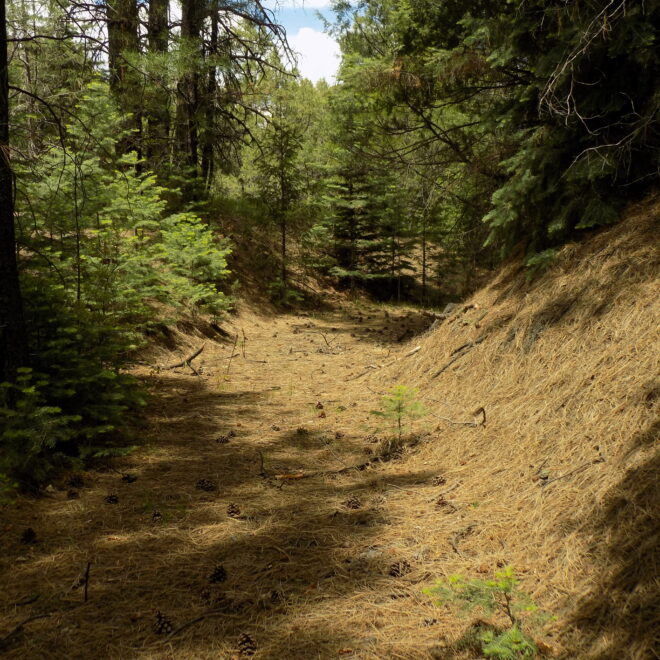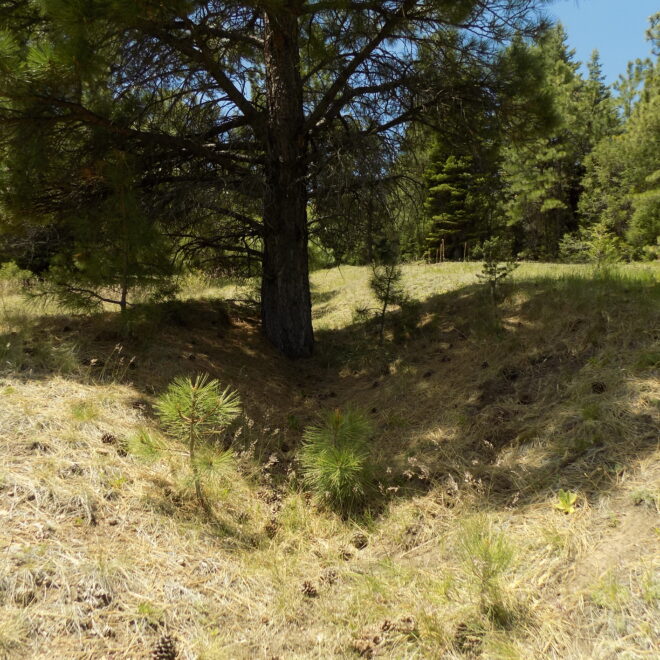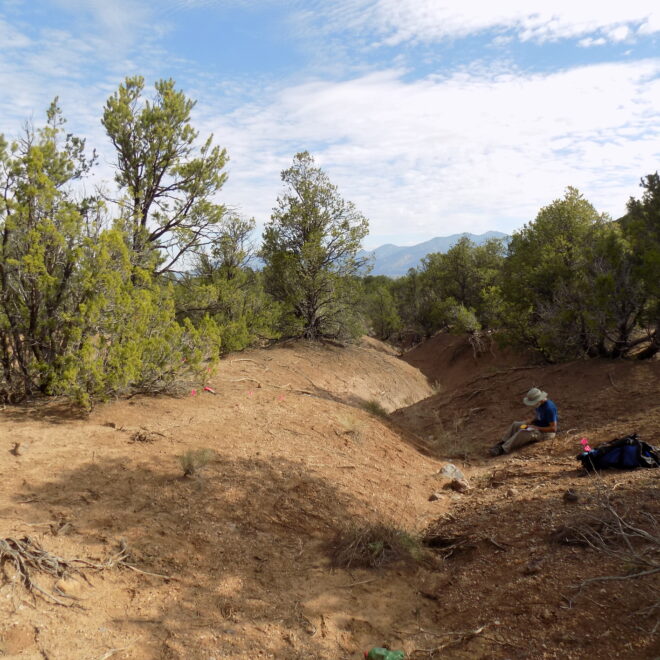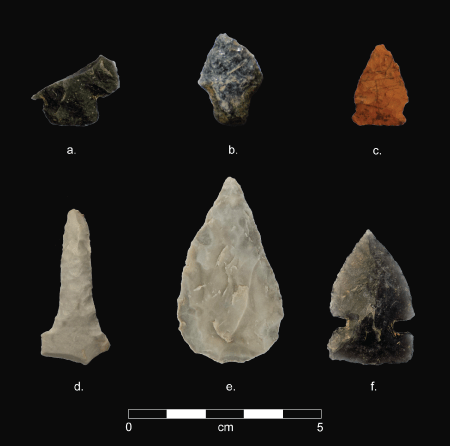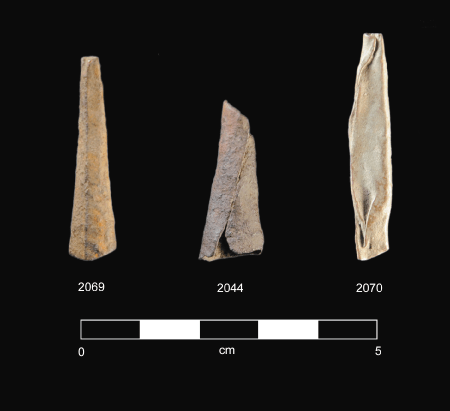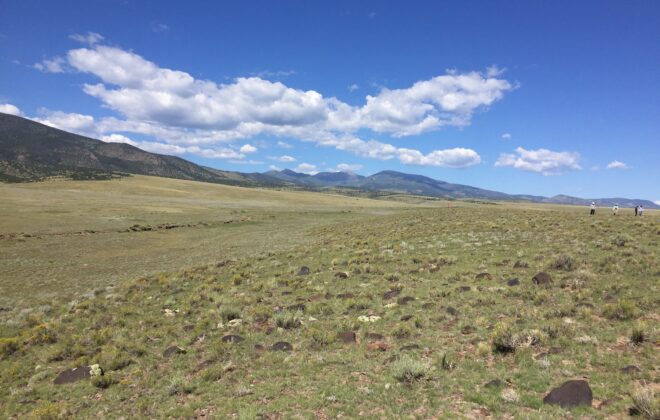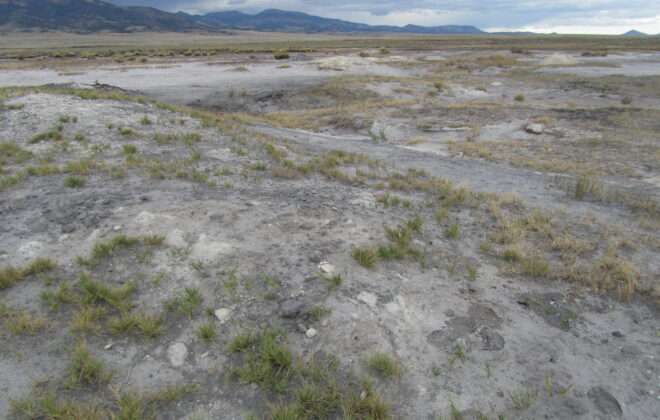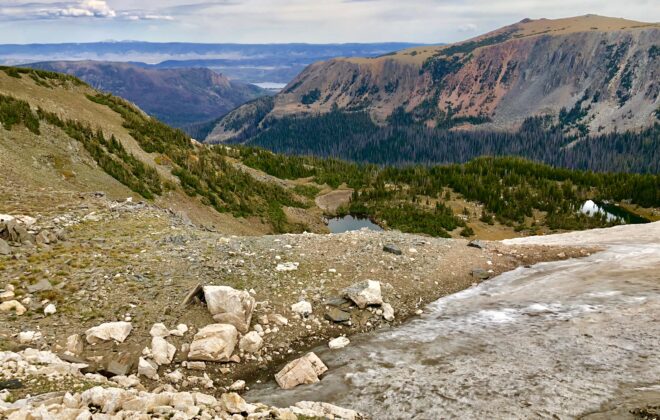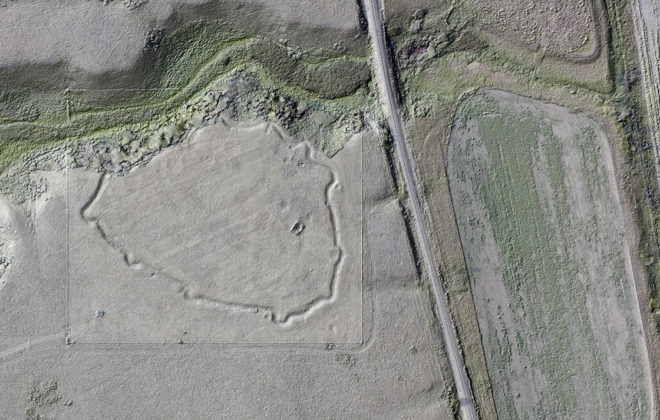Miranda Valley Historical Trails Research
LeRoy and Ann Hafen once described the Old Spanish Trail as the “the longest, crookedest, most arduous pack mule route in the history of America.” Between 1829 and 1848, traders used the trail to take blankets and other woolens produced in the northern Rio Grande to California, where they exchanged them for horses and mules. Like many nineteenth-century trails, the OST followed a network of paths first blazed by American Indians, Taos trappers, and others for hunting, trade, and travel. Close to its origin in Santa Fe, many segments of the trail were also routes of military conquest. One such segment—the Miranda Valley road, located south of Taos, New Mexico—was the focus of a two joint surveys in 2017 and 2018 by PCRG and the Carson National Forest.
The project’s primary goal was to identify and document historic trail segments, including those that may represent Old Spanish Trail-era use of the valley. Other cultural resources were also documented as they were encountered. This research built upon records and field data compiled by Corky Hawk and the Taos County Historical Society, whose data proved instrumental in carrying out this project.
Over 30 trail segments across nine different sites were identified during the two field sessions. Although none could be conclusively linked to the Old Spanish Trail, historical records clearly indicate the trail came through the area. Evidence of this period of use, as well as earlier uses by Spanish colonists and captains in the seventeenth and eighteenth centuries, has likely been obscured or destroyed by later uses of these trail segments.
The valley also contains a rich American Indian occupation. Prior to this research, no Archaic-age sites had been documented in the valley. There are now at least seven different Archaic-aged localities documented in the valley as a result of this research. The presence and density of American Indian artifacts across the valley also indicates that later travelers on the trail networks undoubtedly utilized paths first blazed by American Indians hundreds, if not thousands, or years prior.

